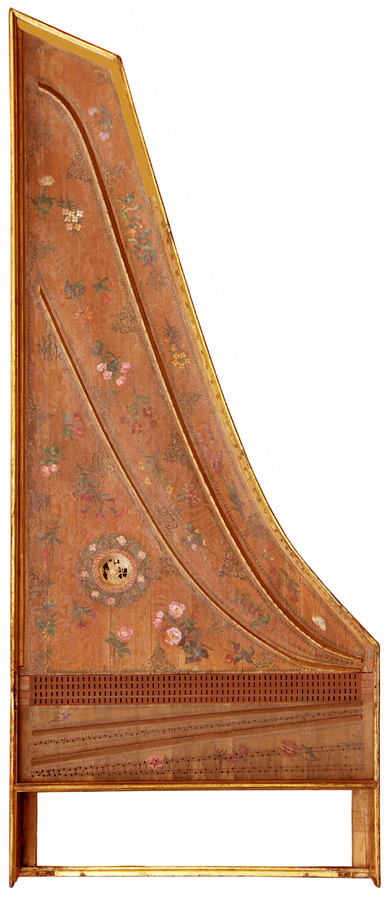![]()
A Franco-Flemish double-manual harpsichord,
![]()
|
|
A plan view of the harpsichord
Like most of the inside and outside of the case, the soundboard had been coated in a thick coat of insoluble linseed-oil varnish before the current restoration. This varnish had to be removed mechanically using a sharp scalpel. The painting of the flower groups and the wreath around the soundboard rosette are in the style of Mabel Dolmetsch and have been attributed to her. The wrestplank with both nuts had been replaced in the 'restoration' of the instrument by Roberto de Regina in Buenos Aires in 1971. This photograph shows the new wrestplank, nuts and the new leather-topped registers of the present restoration. Particular care was taken during the present restoration both with the lateral spacing of the register slots and the nut-pin spacings. Careful attention was also given to position the nuts so that the scalings of the instrument were based on simple numbers of the French pouce and gave normal string lengths for an eighteenth-century French harpsichord.
Important
Features of this harpsichord
A brief history of the musical and decorative states of the Franco-Flemish harpsichord
Details of
the original state of the instrument
Details of the eighteenth-century states of this harpsichord Details of the modern history of this harpsichord
A problem encountered in the ethical restoration of this harpsichord
Return to the main page of this section
|
![]()
